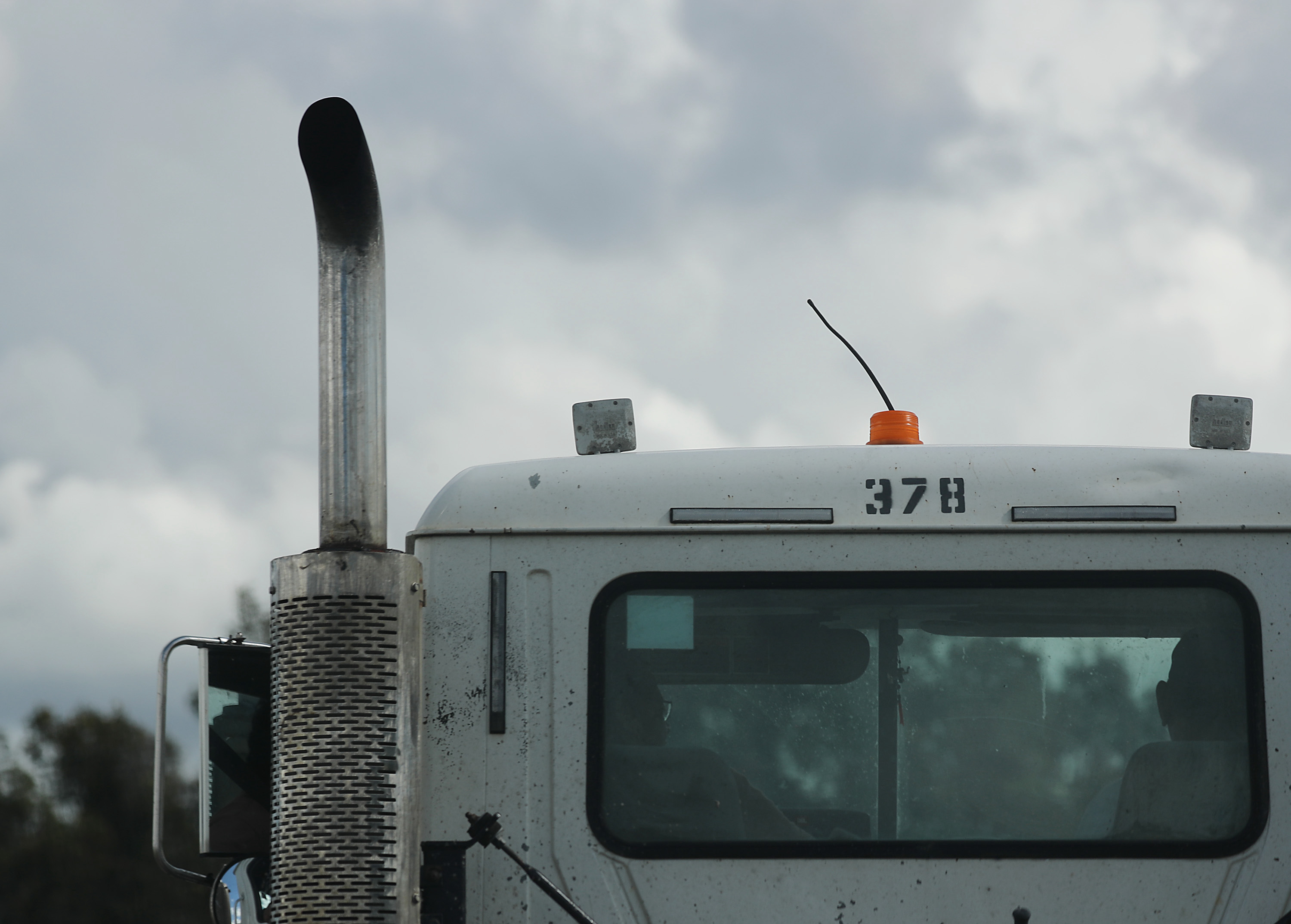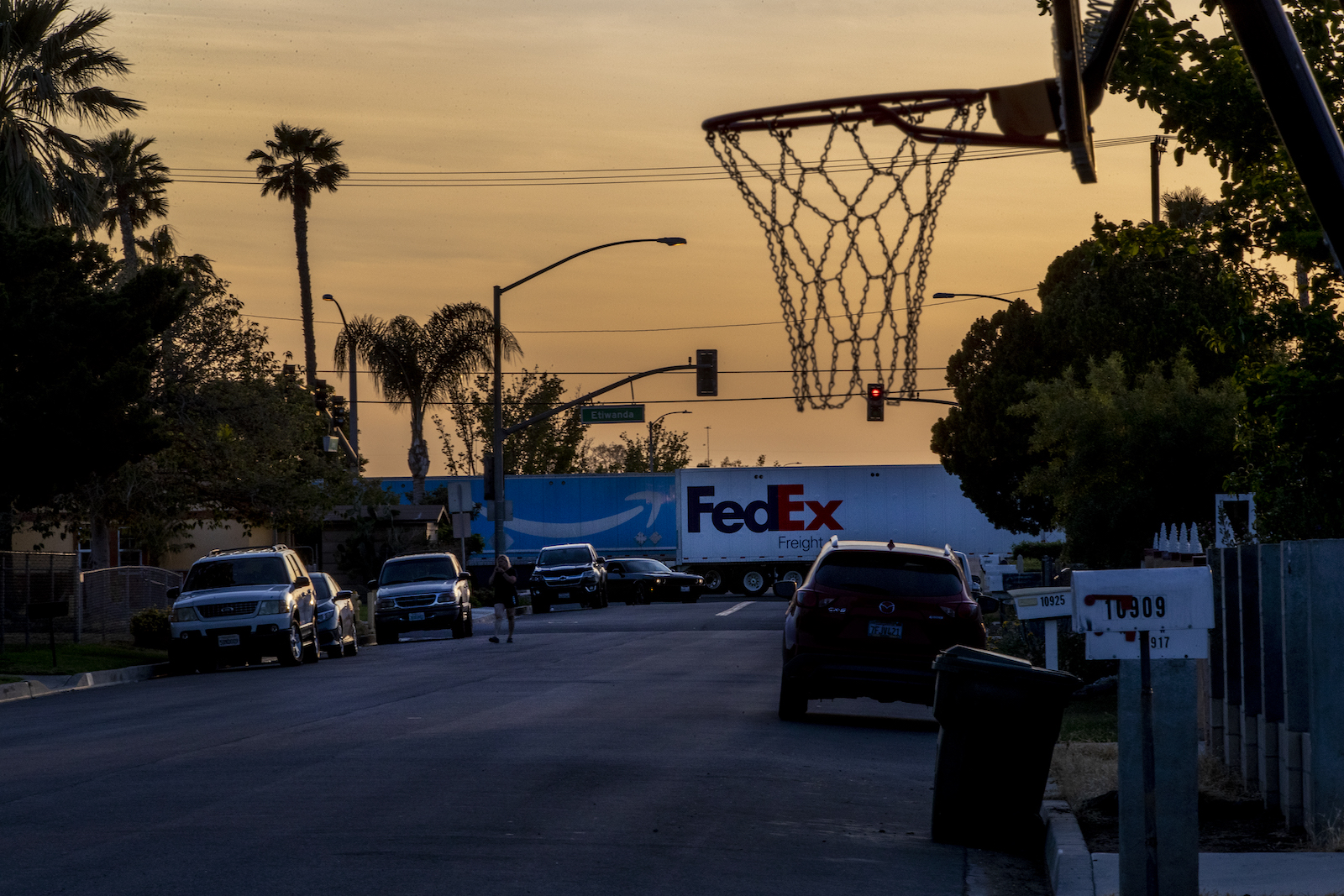For Gaby Mendez Ulloa, an upcoming action by the Environmental Protection Agency, or EPA, isn’t just some obscure government rulemaking. It’s a life-or-death issue.
Over the past few years, the EPA has been working on new standards for nitrogen oxide, or NOx, emissions from heavy-duty trucks — a key ingredient of the brownish haze that blankets the valley east of Los Angeles where Mendez Ulloa lives. Experts expect the proposed rule, currently under interagency review, to be released any day now.
From her home in Riverside, California, part of the most smog-polluted region in the country, Mendez Ulloa worries about her niece, who is four years old. She worries about her younger brother, who has underlying health issues. She worries about her entire community. “I don’t comprehend how everyone’s not freaking out about this stuff,” she said.
It’s been 21 years since the EPA last revised the rules for NOx emissions from heavy-duty vehicles, like buses, semi-trailers, and other large trucks. During that time, business at the ports of Los Angeles and Long Beach has boomed, fueling an expansion of the warehouse industry in the Riverside area and bringing an explosion of truck traffic and a wide range of health concerns for people living in the epicenter of the freight industry.
Now, the EPA is posed to reduce NOx pollution from trucks like the thousands that rumble through Riverside each day. After a public comment period, the agency will finalize the rule before the end of 2022, and it will apply to 2027 models and beyond. “We really should have been doing this yesterday,” said Angelo Logan, a member of the White House Environmental Justice Advisory Council, calling a stricter limit on NOx emissions “a no-brainer.”
When diesel combusts, it produces a toxic plume that includes NOx, as well as more than 40 cancer-causing compounds. “Diesel exhaust is really one of the worst actors out there as far as what it can do to your health,” said Will Barrett, director of clean air advocacy for the American Lung Association.
In the atmosphere, NOx reacts with volatile organic compounds to form fine particulate matter capable of penetrating deep into our lungs, as well as ozone — the main ingredient in smog. “Ozone is a corrosive gas that can actually burn the tissue in your airways, like a sunburn in your lungs,” explained Barrett. Exposure to particle pollution and ozone can harm our respiratory and cardiovascular systems, causing a greater risk of asthma attacks, heart attacks, strokes, heart disease, and even premature death. Both are particularly harmful to children.
Not everyone is affected equally by air pollution, of course. In 2021, the American Lung Association found that people of color were over three times more likely to be breathing the most polluted air compared to white people. Air quality is a particular concern for people living near freight infrastructure, like trucking arteries, railroads, ports, and warehouses — areas that health experts often refer to as diesel death zones.

In Mendez Ulloa’s community, which is predominantly Latino, there are days when the air quality is so bad that schools don’t allow kids to play outside during recess, worried that the pollution trapped in the valley will trigger nosebleeds or life-threatening asthma attacks. “It’s unconscionable that we would allow for this to happen to a segment of our population that don’t have the means to move,” said Logan.
In 2016, the South Coast Air Quality Management District, which includes Los Angeles-Long Beach and the surrounding area, was one of 20 organizations to petition the EPA to update NOx emission standards for heavy-duty engines. While trucks are only one source of NOx — the pollutant is formed when fuels burn at high temperatures in incinerators, power plants, industrial boilers, and rail and ship engines — they have an outsized effect on air quality. In California, for example, heavy-duty trucks make up just 3% of the vehicles on the road, but they’re responsible for more than 50% of NOx pollution from all mobile sources within the state.
“We wanted EPA to move as fast as possible,” said Wayne Nastri, executive officer of the South Coast Air Quality Management District. “Unfortunately, that didn’t happen.”
Two years later and nearly two decades after the EPA had last updated the rules, then-administrator Andrew Wheeler kicked off the EPA’s rulemaking effort. Not long after President Biden took office, he signed an executive order directing the EPA to follow through on the rulemaking, and to consider updating greenhouse gas emissions standards for heavy-duty engines, as well. On December 7, 2021, the EPA forwarded their proposed rule to the Office of Management and Budget. Experts expect it will be released to the public before the end of February.
Environmental advocates hope the EPA will adopt a standard at least as strict as the one California finalized in 2020, and the initial signs indicate they have good reason to be optimistic. On Tuesday, the New York Times reported that the forthcoming federal rule will be modeled on California’s, but that some technical details will likely differ, according to two people familiar with the matter.
The California rule, which will be phased in beginning with 2024 models sold in the state, requires engine manufacturers to eventually reduce NOx emissions by at least 90% and includes provisions to ensure trucks meet standards under real-world conditions and extend warranties. “We know that it’s feasible, we know that it’s reasonable, and we know that it is morally the right thing to do,” said Logan.
Rachel Muncrief, deputy director of the International Council on Clean Transportation, stresses that, while we need to transition the freight system to zero-emissions vehicles as quickly as possible, that won’t happen overnight. That’s why the NOx rule is so important for protecting public health in the interim. “If we do not do a good job on this rule, these vehicles are going to be out on the road polluting for many, many years,” she said.
Logan also wants to see a swift transition to a zero-emission freight system, along with a strong NOx rule for heavy-duty engines and more action on harmful emissions from other elements of the freight industry, like ships and locomotives.
Not only do people living near freight hotspots experience more toxic exposure, they’re also vulnerable to climate-induced disasters, like the intensifying hurricanes that have wallopped port communities in recent years, Logan explained. “Communities around freight facilities get a double whammy.”



